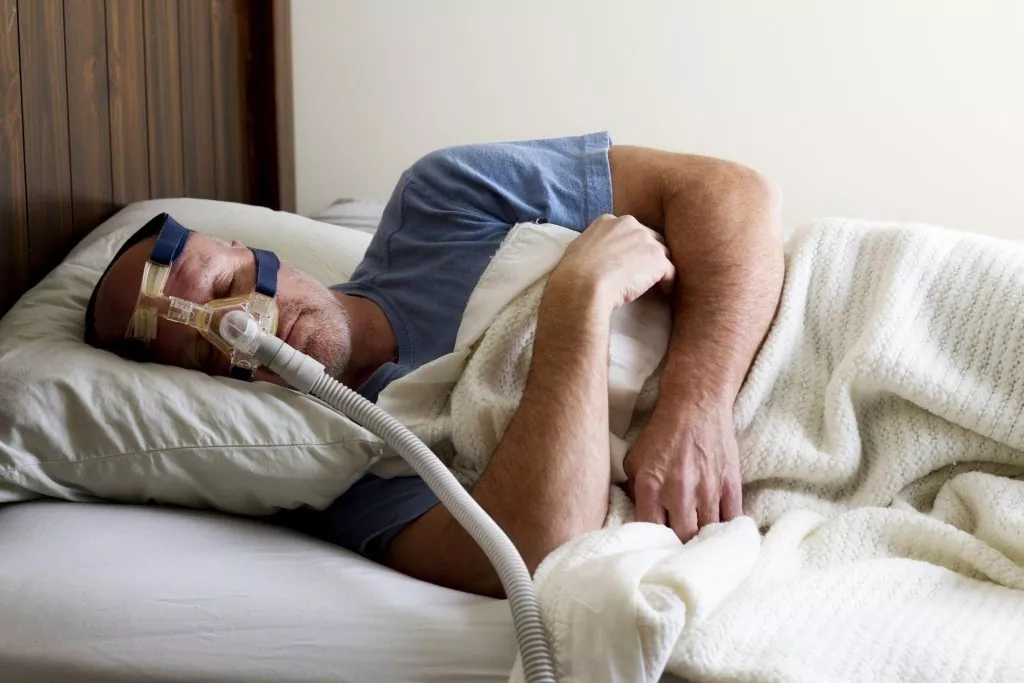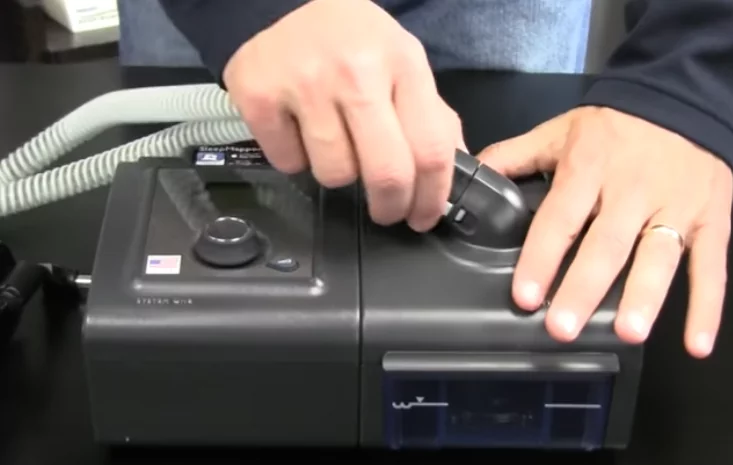People who suffer from Obstructive Sleep Apnea (OSA) may perhaps gasp, throttle, or even stop inhaling oxygen during sleeping. The person is more likely to have excessive sleepiness during the daytime, sore throat, mood swings, depression, and inability to concentrate on work.
Those who neglect OSA can be at a huge risk for severe health problems, such as heart disease, cardiovascular disease, cognitive problems, and a shorter lifespan. OSA enhances the threat of irregular heart rhythms (better known as arrhythmias), which can lower your blood pressure.
Although there are numerous medications for sleep apnea, Continuous Positive Airway Pressure (CPAP) therapy appears to be the most effective.
In this therapy, a steady amount of pressurized air is pumped continuously through a face mask to keep the patient’s blocked airways open. The patient has to put on their mask during sleeping and attach it to the machine as it will pass air into their nose and mouth and keep their breathing passage free.
If you’re new to CPAP therapy, there are some ways to make it more comfortable. Changing your air pressure every few hours can help you sleep better, and the ramp feature on CPAP machines helps keep your airways open while you’re asleep. If you aren’t sure if CPAP therapy is right for you, try some relaxation exercises before bed.

While CPAP therapy is effective, it can take some time to get used to the machine and the mask. Here are some tips for sleeping easier with a CPAP machine:
- Start with a comfortable mask: The mask is the most important part of CPAP therapy as it delivers the air pressure. There are several types of masks available, such as nasal masks, full-face masks, and nasal pillows. It’s important to try on different masks and choose the one that fits the best and is most comfortable.
- Adjust the air pressure: The air pressure on the CPAP machine may need to be adjusted to find the right setting for you. Your healthcare provider will work with you to determine the appropriate pressure setting.
- Get into a routine: Establishing a regular sleep routine can help you get used to the CPAP machine. Try to go to bed and wake up at the same time every day, and make sure the bedroom is dark, quiet, and at a comfortable temperature.
- Use a humidifier: Dry air can cause irritation and discomfort when using a CPAP machine. A humidifier can add moisture to the air and make it more comfortable to breathe.
- Give yourself time: It can take some time to get used to the CPAP machine and the mask. Be patient and give yourself time to adjust.
- Use Aromatherapy: You can use essential oils like lavender, chamomile, and sweet marjoram to help you relax and sleep better.
- Talk to your healthcare provider: If you’re having difficulty adjusting to the CPAP machine or are experiencing discomfort, talk to your healthcare provider. They may be able to offer additional tips or make adjustments to the machine to help make it more comfortable.
The first step is adjusting to the CPAP machine. Most of them have a “ramp” feature that lowers the air pressure as you fall asleep. Changing the ramp mode can help ease the discomfort and help you sleep better. Then, your doctor can adjust the pressure so that it matches your breathing patterns. If you’re still uncomfortable after a few weeks, you can try using a different machine to sleep more comfortably.
The best way to adjust your CPAP machine is to change positions when you sleep. You should avoid sleeping on your back, which is the worst position for sleeping with a CPAP machine.
Instead, you should try side sleeping. This position is the best for your condition since gravity works in your favor. The soft tissues will naturally open while you sleep, which will lessen the work of your CPAP. There are many CPAP pillows that can help you sleep on your side.
Changing your CPAP machine can be difficult at first, but you can adjust it over time to minimize your discomfort. Your doctor will prescribe a machine with a ramp feature that allows you to start with low pressure and gradually increase the pressure as you fall asleep. This feature should be easy to find and change if you need to change the settings, but it may not be suitable for everyone.
Before you can switch to a different air pressure setting, you need to know how to use the CPAP machine. In the beginning, you should use the machine during naptimes. This will help you adjust to the air pressure as you sleep. During the first few weeks, you should also make sure you are using the right type of CPAP mask and hose. If your air pressure is too low, you should use a CPAP machine with a ramp feature. This will increase the air pressure as you fall asleep.
The best CPAP machine comes with a ramp feature that helps you adjust to the pressure as you fall asleep. This feature is helpful for those who find it difficult to adjust. It is also important to keep the humidifier and hose clean. This will help reduce the amount of dirt in the hose. If you do not like these features, you can ask your doctor for an automatic CPAP machine.
CPAP therapy is an effective treatment for sleep apnea, but it can take some time to get used to the machine and the mask. By following these tips, you can help make the transition to CPAP therapy easier and improve your overall sleep quality. Remember that, if you’re having difficulties, don’t hesitate to contact your healthcare provider for additional support.

